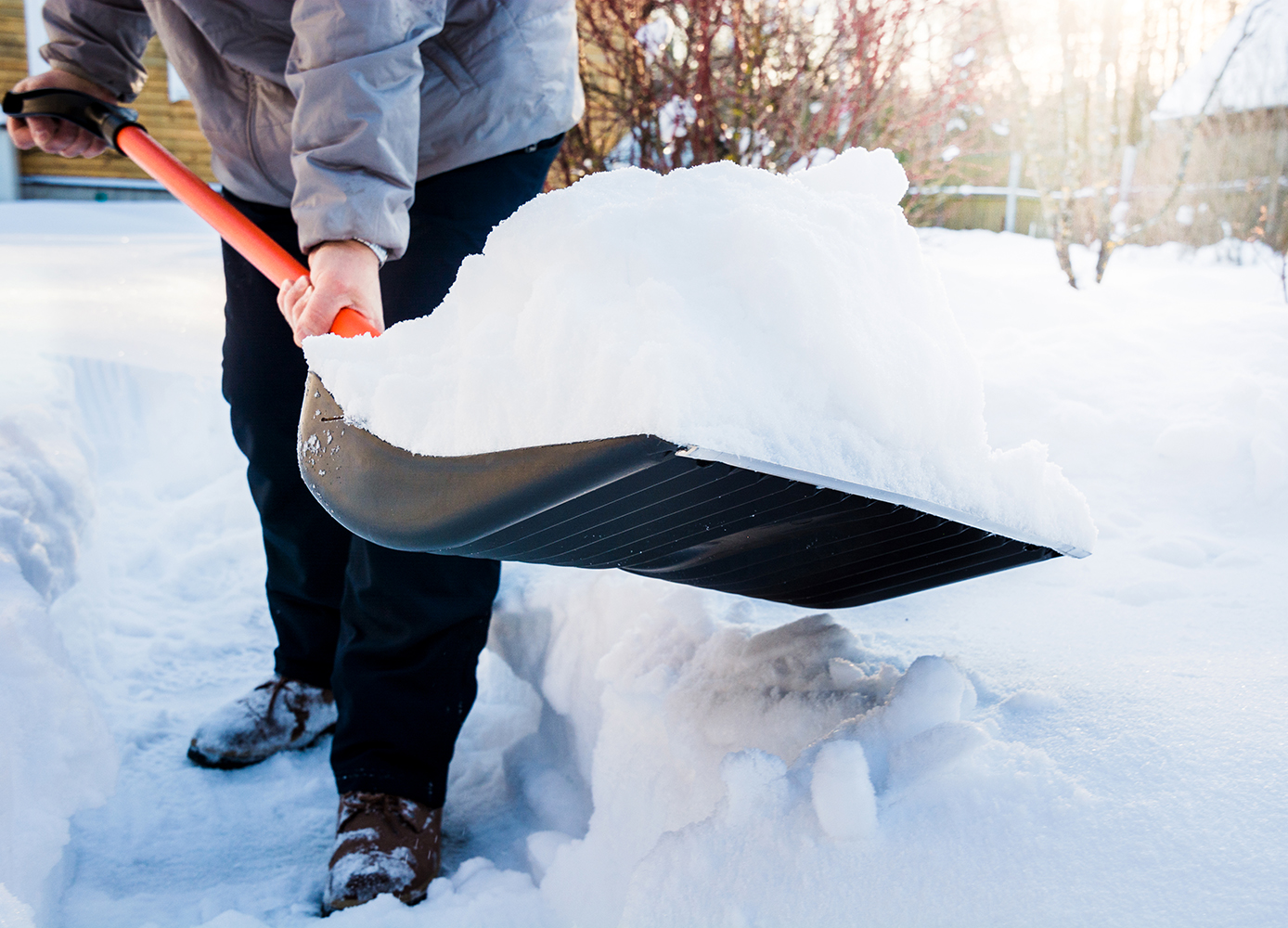Push the snow—not yourself: know your limits and take it easy
By Caitlin Finlay
A necessary evil, shovelling snow puts you at risk—you can slip and fall, and even if you don’t, you can easily strain or injure your back or arms. While it’s a chore we want to get through as quickly as possible, it pays to be careful.
Shovelling is physically demanding, strenuous on the back and heart. Adults over 50 with heart disease or at risk for heart disease should avoid shovelling—they have an increased risk for a shovelling-induced heart attack. Experts also recommend that you avoid shovelling after eating, drinking alcohol, or smoking, as these can increase the stress on your heart. If you’re not sure about your health and shovelling, you should consult with your doctor to determine if it would be too strenuous fro you.
Before you go out to shovel, there are steps you can take to be prepared and to reduce the chances of incurring an injury. Make sure you’re dressed warmly, with multiple layers of lightweight clothing that doesn’t hinder movement. The inner layer of clothing should be breathable and wick perspiration away from the skin to avoid a chill. Your head and hands should be covered, and your gloves should provide a good grip to prevent the shovel from slipping. Boots or shoes should have good traction to prevent slipping, and to further reduce the odds of a fall, it’s a good idea to put salt or sand on the walkway or driveway to increase traction. Lastly, walk around or do some stretches prior to shovelling to warm up for the physical activity ahead.
As for the shovelling itself, it’s important to pace yourself and use proper form. It’s best to shovel while the snow is freshly fallen and at its lightest: wet, heavily packed or partly melted snow will be heavier and harder to shovel.While you should work at whatever pace works for you, you could aim for shovelling for at most 15 minutes at a stretch, taking breaks and making sure to stay warm while you rest. If the weather is too cold—below -40°C/F—wait for it to warm up before shovelling to avoid cold exposure.
Make sure you’re using a shovel that’s the right size for you; you want a light shovel with a shaft long enough to reduce bending over. Shovels with smaller blades are meant for lifting snow whereas large shovels are better for pushing snow. Whenever possible, it’s better to push the snow rather than to lift it, as lifting is more strenuous. The correct form for shovelling is also crucial to avoiding injury: bend at a hips and knees to reduce back strain, make sure your feet are facing the direction you are dumping the snow, and never twist at the waist to throw snow or throw snow over your shoulder.
Stay safe this winter: follow these shovelling recommendations, be aware of the signs of strain or heart attack, and know your limits.
Photo: iStock/Svetlana-Cherruty.






